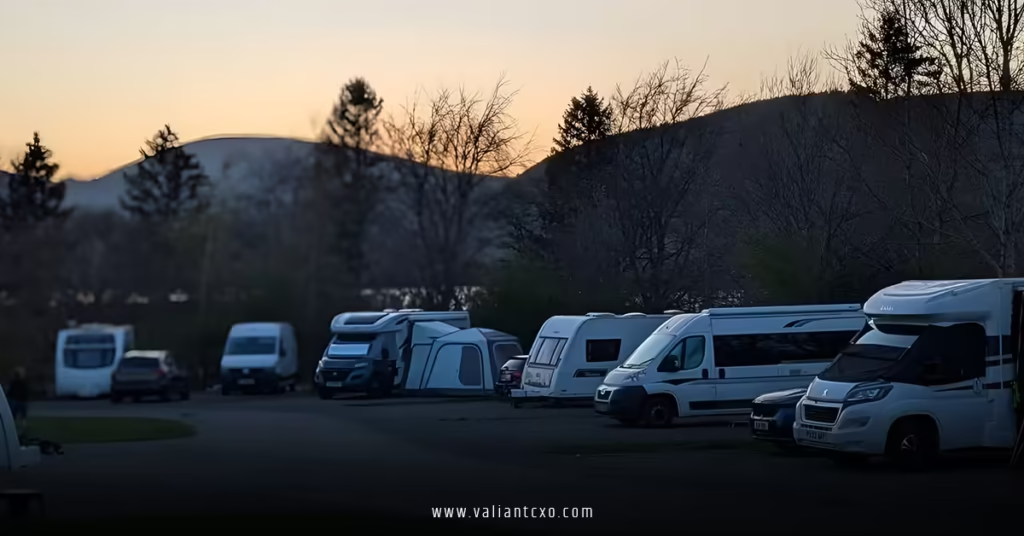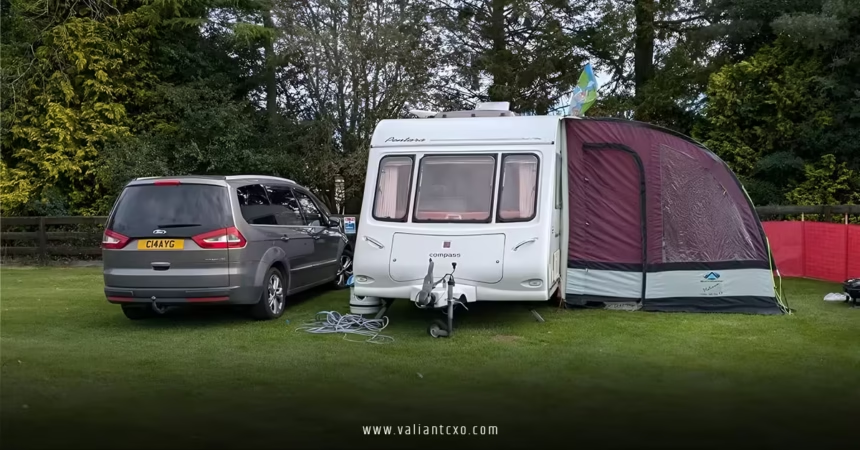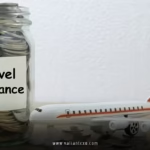West Walton Gypsy and Traveller Site has become the talk of Norfolk’s sleepy villages, stirring up debates that feel like a storm brewing over the flat Fens. Picture this: a patch of former orchard land, once dotted with apple trees swaying in the breeze, now hosting a solitary static caravan that’s ignited passions on both sides of a deeply divided community. As someone who’s followed these stories from afar, I can’t help but wonder—what happens when the need for cultural preservation clashes head-on with the desire for an unchanged rural idyll? In this deep dive, we’ll unpack the layers of this site, from its humble beginnings to the fierce battles shaping its future.
Understanding the West Walton Gypsy and Traveller Site
Let’s start with the basics, shall we? The West Walton Gypsy and Traveller Site isn’t just a plot of land; it’s a symbol of broader tensions in modern Britain. Tucked away in Walton Highway, a hamlet within the parish of West Walton in Norfolk, this site sits off Common Road South, surrounded by the vast, windswept landscapes that define the East Anglian countryside. If you’ve ever driven through these parts, you know the allure—endless skies, drainage ditches humming with life, and homes that seem frozen in a gentler time.
But why here, you ask? The West Walton Gypsy and Traveller Site emerged from a perfect storm of housing shortages and planning pressures. Gypsies and Travellers, nomadic communities with roots stretching back centuries, face acute challenges in securing stable spots to call home. According to recent assessments, Norfolk alone grapples with a shortfall of over 70 pitches, pushing councils like King’s Lynn and West Norfolk to rethink their strategies. This site, initially unauthorized, now stands at the crossroads of that rethink.
Location and Background of the West Walton Gypsy and Traveller Site
Zoom in on the map, and you’ll find the West Walton Gypsy and Traveller Site nestled between fertile fields and quiet lanes, just a stone’s throw from the A47. It’s part of a parish that’s seen its share of changes—Blunts Drove, nearby, already hosts an established public site, reminding us that Traveller communities aren’t newcomers to these parts. The land itself? Once an orchard buzzing with seasonal workers, it changed hands a few years back. A previous owner dreamed of a four-bedroom house but got slapped down by planners. Enter Freddie Brazil, a local Traveller who saw potential in the soil for something more personal: a place to park his caravan and keep his horses.
This backstory isn’t unique, but it sets the stage for why the West Walton Gypsy and Traveller Site feels so personal to everyone involved. It’s not a sprawling encampment; right now, it’s one static caravan, a touring van, and some basic setups. Yet, proposals whisper of expansion—up to four pitches here, part of a cluster that could balloon to 16 in the vicinity. Imagine the ripple: what starts as a single family’s anchor could redefine the neighborhood’s horizon.
Who Are the Gypsies and Travellers Behind the West Walton Gypsy and Traveller Site?
Hold on—before we dive into the drama, let’s humanize this. Gypsies and Travellers aren’t a monolith; they’re Irish Travellers, Romany Gypsies, and others bound by a shared heritage of mobility, craftsmanship, and resilience. Think of them as the original road warriors, trading stories and skills from generation to generation. In the UK, laws like the Housing Act push councils to provide sites, recognizing that bricks-and-mortar housing often clashes with their cultural need for space to tinker with vans, raise horses, or gather kin.
At the heart of the West Walton Gypsy and Traveller Site is Freddie, who’s defended his choice with quiet fire: “We have a right to own property and live like anyone else.” It’s a reminder that behind the headlines are families navigating the same dreams—stability for kids, roots without chains. Yet, as we’ll see, not everyone sees it that way.
The History Behind the West Walton Gypsy and Traveller Site
Rewind three years, and the West Walton Gypsy and Traveller Site was little more than whispers in the wind. Freddie bought the land post-orchard era, starting with horses grazing peacefully. Then came the caravan—a bold move that screamed independence but ignored the red tape. Planning permission? Denied flat-out. Enforcement notices followed, with the council gearing up for High Court drama. It felt like a standoff in a Western flick, the lawman versus the settler.
Fast-forward, and the plot thickens. Government mandates hit hard: councils must deliver pitches or face penalties. West Norfolk’s Gypsy and Traveller Accommodation Assessment (GTAA) from 2023 laid it bare—a yawning gap of 76 spots needed by 2039. Suddenly, that lone caravan wasn’t a thorn; it was a potential solution. The West Walton Gypsy and Traveller Site shifted from outlaw to olive branch, at least in official eyes.
This evolution mirrors national trends. Remember Dale Farm in Essex? That epic clash scarred communities for decades. Here in West Walton, history rhymes but doesn’t repeat—yet. The site’s story is a microcosm of how policy pivots can upend lives, turning quiet compliance into vocal uproar.
The Spark of Controversy: Unauthorized Development at the West Walton Gypsy and Traveller Site
What lit the fuse? Simple: the caravan appeared without a whisper of approval. Neighbors watched in disbelief as the static home settled in, horses thundering past on lanes meant for tractors, not trots. Fly-tipping rumors swirled—piles of waste nearby, though Freddie denies any hand in it. “It’s not us,” he insists, pointing fingers elsewhere.
The West Walton Gypsy and Traveller Site’s unauthorized status amplified every grievance. Drainage woes? The Fens flood like clockwork, and locals fear a site here could turn paradise into a puddle. Schools? Already bursting, with no room for more little ones. And the aesthetics—oh, the heartbreak of an orchard’s ghost haunting a caravan’s shadow.
But let’s flip the script. For Travellers, unauthorized sites are survival tactics in a system stacked against them. Evictions breed instability; kids miss school, health dips. The West Walton Gypsy and Traveller Site, flaws and all, offers a foothold. It’s a raw reminder: controversy doesn’t brew in vacuums but in the gaps between need and norm.
Local Reactions to the West Walton Gypsy and Traveller Site
Step into the local pub, and you’ll hear it—the raw pulse of frustration. “Our village is ruined,” one anonymous resident laments, voice cracking over a pint. The West Walton Gypsy and Traveller Site has morphed from a blip to a bogeyman, blamed for everything from plummeting property sales to frayed nerves.
Julian Kirk, a Tory councillor and farmer with dirt under his nails, captures the mood: “Residents are experiencing mental health issues, depression, anxiety—and potential financial loss.” He’s not mincing words; homes once fetching premium prices now gather dust on the market. Buyers bail after searches flag the site, leaving sellers staring at “worthless” walls. “Why can’t they go elsewhere?” Kirk asks, echoing a chorus of “not in my backyard.”
Yet, not all voices shout the same. Some nod to fairness—Travellers need homes too. Parish councils object on practical grounds: flood risks, road safety from horse races. It’s a tapestry of fear, empathy, and exhaustion, woven tight around the West Walton Gypsy and Traveller Site.
Voices from the Frontline Near the West Walton Gypsy and Traveller Site
Listen closer, and stories emerge like fog off the dykes. One villager, penning a letter to planners, rails against litter-strewn lanes and breakneck horse gallops: “They’re closing off roads with no regard for safety.” Another quips darkly, “Put pitches at Sandringham—see how the royals like it!” Humor masks hurt, but the undercurrent is clear: the West Walton Gypsy and Traveller Site feels like an invasion, uninvited and unending.
On the flip side, Freddie’s plea cuts through: a family man seeking sanctuary, not strife. These clashes aren’t abstract; they’re neighbors eyeing each other warily over hedges, wondering if dialogue could defuse the bomb.
Council’s Dilemma and the U-Turn on the West Walton Gypsy and Traveller Site
Ah, the council—caught like a fox in headlights. West Norfolk officers started strong: rejection, enforcement, the works. But 2024’s policy winds shifted. New rules demand sites; ignoring them risks legal whiplash. Cue the U-turn: “Enforcement would be unreasonable now,” reads the report, recommending approval for that single caravan and tweaks.
It’s pragmatic, sure, but locals cry foul. “They said no, then yes— what’s next?” fumes one. The committee deferred decisions in February 2025, awaiting the local plan’s fate. If allocated, the West Walton Gypsy and Traveller Site gets a green light; otherwise, limbo lingers.
This flip-flop underscores the tightrope: balance Traveller rights with settled fears. Transparency’s key—councils must explain, not evade. As one planner notes, it’s about “meeting needs without neglect.” Tricky, but essential.

Impacts on the Community Around the West Walton Gypsy and Traveller Site
No sugarcoating: the West Walton Gypsy and Traveller Site has left scars. Property values? Tanked. Homes in this tight-knit hamlet, once idyllic investments, now scare off suitors. “Several neighbors can’t sell,” whispers a letter to the council. It’s not hyperbole; searches reveal the specter, and deals dissolve like mist.
Property Values and Sales Near the West Walton Gypsy and Traveller Site
Envision your nest egg evaporating. That’s the nightmare for West Walton folks. Kirk spells it out: “These properties are now worthless.” Buyers vanish, valuations plummet—enormous hits in a region where homes are lifelines. It’s economic whiplash, turning dream pads into albatrosses.
But is it fair to pin it all on one site? Clusters matter—36 pitches within two miles could compound the crush. Still, the West Walton Gypsy and Traveller Site stands accused, a scapegoat for systemic squeezes.
Quality of Life Concerns Tied to the West Walton Gypsy and Traveller Site
Beyond bucks, it’s the soul-suck. Anxiety spikes; depression creeps in. “Mental health issues abound,” Kirk laments. Litter mars lanes, horses hoof it hazardously—daily daggers to peace. Schools strain under extra enrollment; floods threaten all.
Yet, positives peek through. If managed, sites foster integration—shared schools, local shops buzzing. The West Walton Gypsy and Traveller Site could bridge worlds, if tempers cool. It’s a call for compromise: fences, not feuds.
The Bigger Picture: Gypsy and Traveller Needs in Norfolk and Beyond
Pull back, and the West Walton Gypsy and Traveller Site is a pixel in a national mosaic. The GTAA screams urgency: 76 pitches short, families roadside or crammed. Nationally, evictions soar—over 1,000 in 2023 alone. It’s not NIMBYism alone; it’s policy paralysis.
Norfolk’s Fens, with their watery ways, suit Travellers’ lore—canals for barges, space for steeds. Allocating sites like West Walton honors that, per human rights edicts. But success hinges on design: eco-friendly, screened, community-led.
Think analogy: like urban sprawl swallowing green belts, Traveller sites test rural resolve. Done right, they enrich; botched, they embitter. The West Walton Gypsy and Traveller Site tests that truth.
Future Prospects for the West Walton Gypsy and Traveller Site
Peering ahead? Murky, but hopeful. The local plan’s submission looms—allocation could cement the site, with conditions: drainage fixes, occupancy caps. Expansion? Possible, but paced to soothe souls.
Community talks bubble—mediation sessions, perhaps. Freddie eyes permanence; villagers, preservation. If history’s a guide, compromise wins: buffered borders, joint events. The West Walton Gypsy and Traveller Site could evolve from flashpoint to fixture, a testament to tenacity.
What if? Schools share stories of Traveller crafts; lanes host fêtes blending traditions. It’s no pipe dream—precedents exist, from Devon to Derbyshire. The key? Listening, really listening.
Conclusion: Finding Harmony at the West Walton Gypsy and Traveller Site
Wrapping this whirlwind, the West Walton Gypsy and Traveller Site embodies the push-pull of progress: a vital haven for one group, a haunting specter for another. We’ve traced its orchard origins, the U-turn uproar, the heartfelt hurts, and the urgent needs driving it all. At its core, it’s about dignity—for Travellers seeking soil to root, and locals guarding their green heartland.
Don’t let division define it. Reach out, engage—councils, kin, critics. The Fens have weathered worse; this site could sow seeds of understanding, not strife. What’s your take? Dive into the dialogue; Norfolk’s future might just thank you.
Frequently Asked Questions (FAQs)
1. What is the current status of the West Walton Gypsy and Traveller Site?
As of October 2025, the West Walton Gypsy and Traveller Site features a single static caravan pending retrospective approval. Decisions are deferred while the local plan reviews allocation, amid ongoing community consultations.
2. Why did the council change its mind about the West Walton Gypsy and Traveller Site?
The U-turn stems from national pressures to address a 76-pitch shortfall in West Norfolk. Enforcement shifted to approval recommendations to meet housing needs for Gypsy and Traveller families.
3. How has the West Walton Gypsy and Traveller Site affected local property prices?
Residents report significant drops, with sales stalling as buyers cite the site in searches. Valuations have fallen sharply, exacerbating financial stress in the hamlet.
4. Are there plans to expand the West Walton Gypsy and Traveller Site?
Proposals suggest up to four pitches here, part of a regional cluster. Expansion depends on the local plan’s outcome, with emphasis on sustainable, low-impact development.
5. How can communities support fair outcomes for sites like the West Walton Gypsy and Traveller Site?
Engage in consultations, advocate for mediated talks, and push for well-designed sites. Balancing needs through empathy builds bridges, ensuring everyone finds a place to thrive.
Read Also:valiantcxo.com


